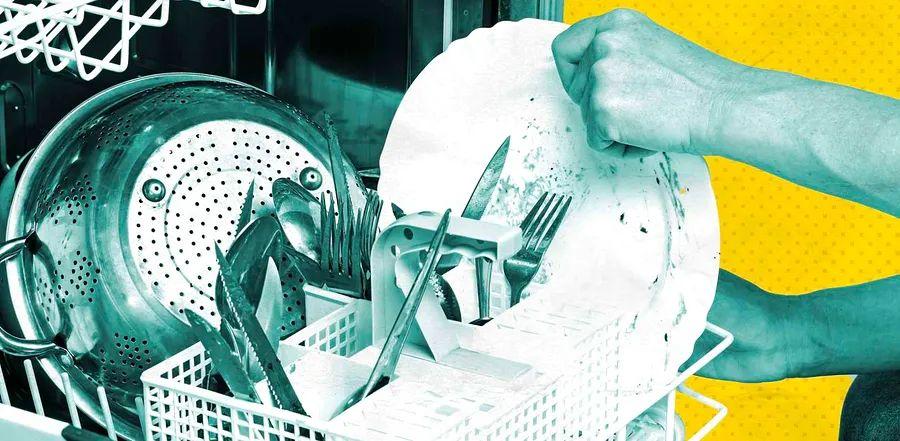Cascade Resolves the Question: Is Rinsing Your Plates Before Loading the Dishwasher Really Necessary?

I’ll admit it: I’m a pre-rinsing enthusiast. Before I load our dirty dishes into the dishwasher, I make sure to give them a thorough rinse until they’re nearly spotless. But honestly, I’m not sure why I do it—maybe it’s a habit from my childhood chores, or perhaps I’m just concerned about the plumbing in our old 1940s home.
It turns out, I’m not the only one who pre-rinses. A recent survey by Procter & Gamble found that 86% of people incorporate pre-rinsing or pre-washing into their dishwashing routine.
I started wondering if my pre-rinsing routine actually benefits me, or if it’s just a waste of time and water. To find out, I reached out to Cascade, the experts in dishwasher detergent.
Is Pre-Washing Your Dishes Necessary Before Putting Them in the Dishwasher?
Cascade Senior Scientist Morgan Eberhard explains that the answer is no—though there is an important exception.
Eberhard recommends scraping off any large food particles that might clog or damage your machine, but she says it’s fine to leave behind the last bits of food, sauces, and grease on your dishes. No need to run the water, either.
She also points out that by using the dishwasher and skipping the pre-rinse, we can save not only water and energy but also time.
According to Eberhard, Energy Star-certified dishwashers use less than four gallons of water per cycle, whereas a running sink can use the same amount in just two minutes. By switching to the dishwasher, you could save up to 100 gallons of water each week.
Additionally, Energy Star-certified dishwashers are more energy-efficient than washing dishes by hand, which means you can also lower your utility bill by using the dishwasher regularly.
Worried about my home's aging, potentially fragile plumbing, I asked Eberhard how dishwasher detergents like Cascade break down the leftover food, sauces, and grease on dirty plates in the dishwasher.
Eberhard explains that high-performance dishwasher detergents like Cascade Platinum Plus! combine powerful cleaning agents that hydrate and scrub away stubborn, dried-on food, leaving dishes virtually spot-free and ready for the cabinet. The dual-action formula includes starch- and protein-breaking enzymes that tackle tough food residues better than ever.
Tips for Loading Your Dishwasher Like a Pro
Now that we know pre-rinsing or pre-washing isn’t necessary before loading dishes into the dishwasher, I asked Eberhard to share her expert tips for ensuring our dishes come out spotless every time.
Cascade Senior Scientist Morgan Eberhard
Eberhard advises, "Make sure every dish has a clear path to the water for the best cleaning results." She adds, "For flatware, avoid letting spoons clump together. Try mixing up the types of utensils in your cutlery basket to prevent them from nesting together.”
To ensure forks and spoons come out spotless, Eberhard recommends loading them standing up, so the dirtiest part is exposed to the water. As for knives, load them with the blade facing down for safety, so you don’t risk cutting yourself while unloading.
Additional dishwasher loading tips from Cascade include:
- Double check items are dishwasher safe: A dishwasher may be too rough for some prized kitchen items, or might not be appropriate for some materials, like wood, aluminum, and cast iron. Be sure to double-check that all items are dishwasher safe before loading if you’re unsure.
- Load the bottom rack: Put plates and messy, burnt-on pots and pans on the bottom rack in the direction of the prongs, facing the water source. Typically, the water source is in the center of the machine, and you want as clear a path as possible between the spray and your dirty dishes.
- Load the top rack: Place cups, mugs, and bowls face down on the top rack between prongs to prevent rattling. This way, they’ll also get cleaned better and won’t collect water, which can leave behind unsightly deposits. With wine glasses and other delicate glassware, load them a finger-width apart on the top rack and utilize the stemware holder, if your dishwasher has one, to keep them in place so they don’t fall over. Plasticware also belongs on the top rack. Temperatures typically remain cooler on the top rack, which will prevent plastic from melting.

1

2

3

4

5
Evaluation :
5/5